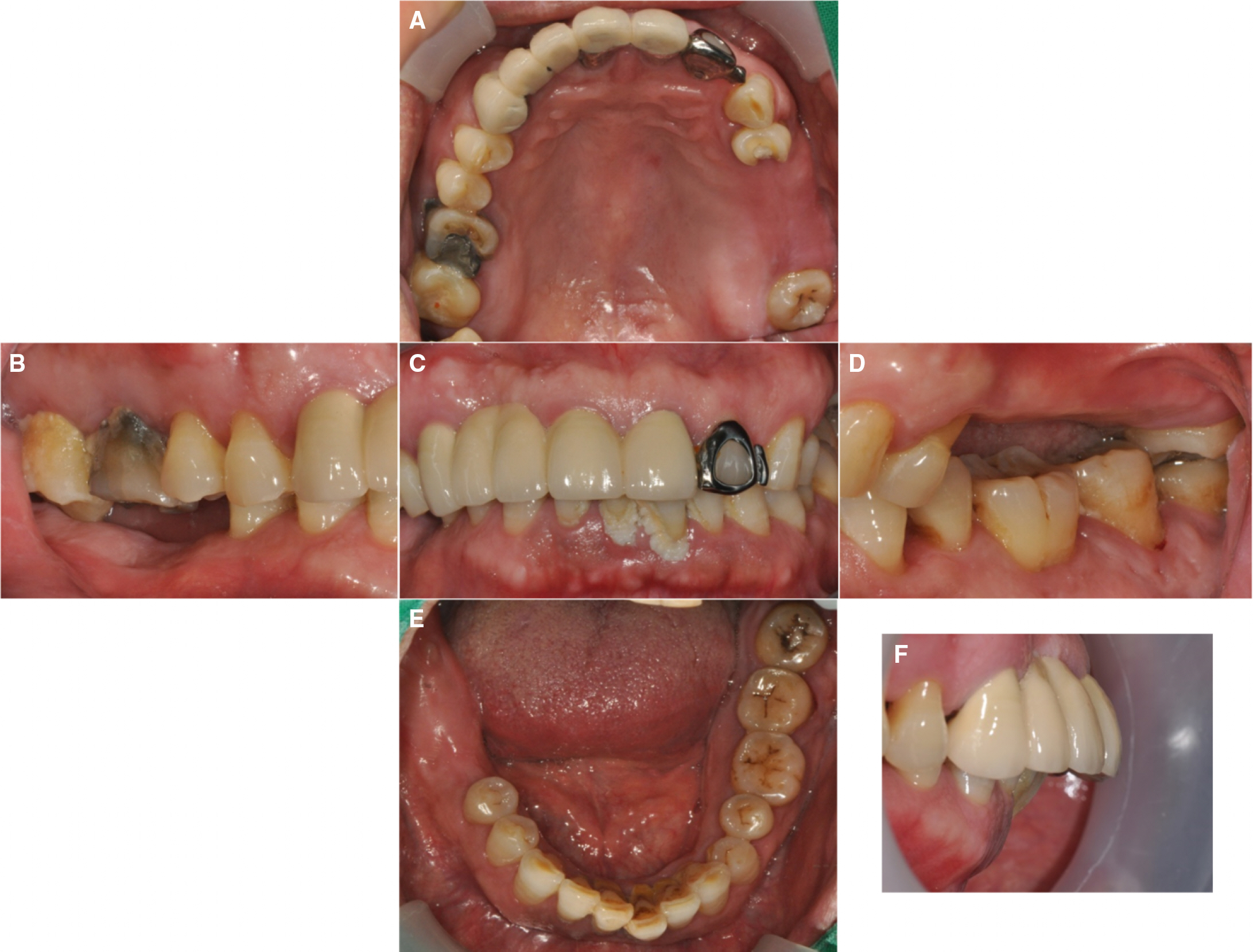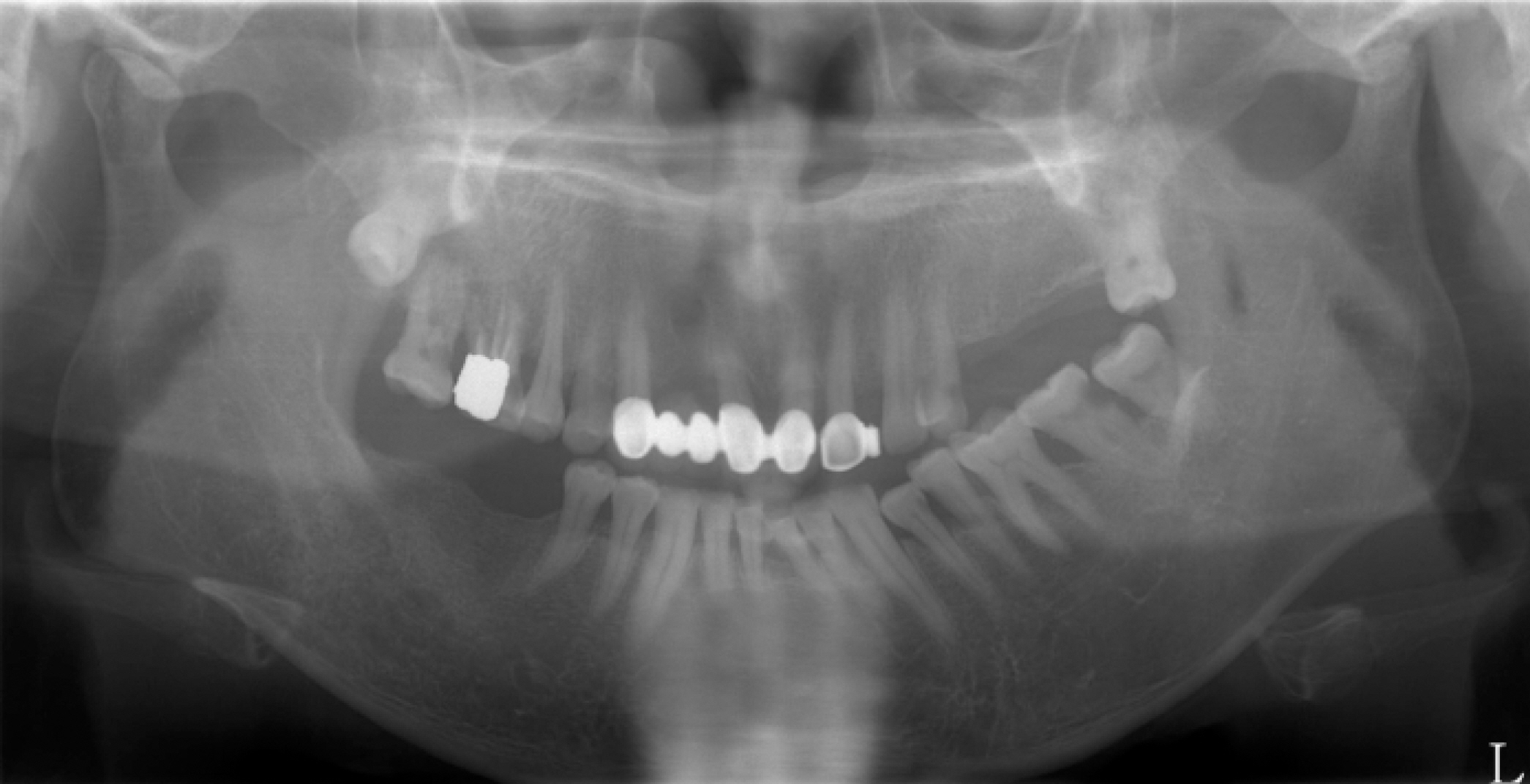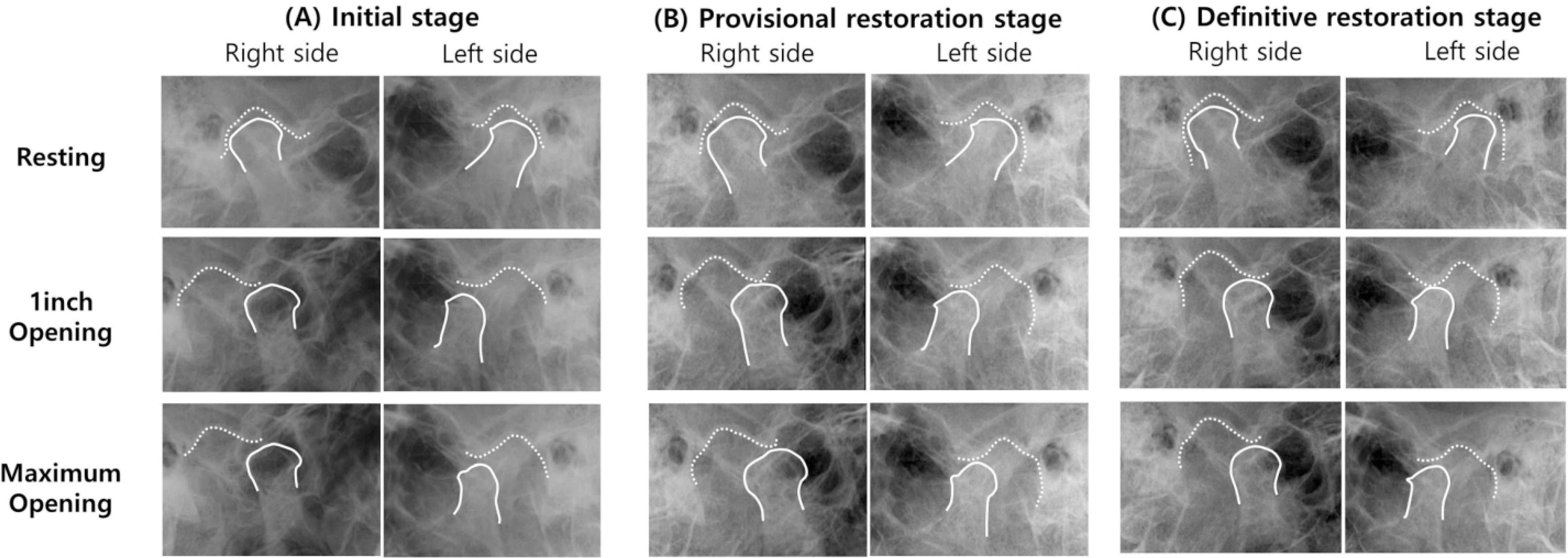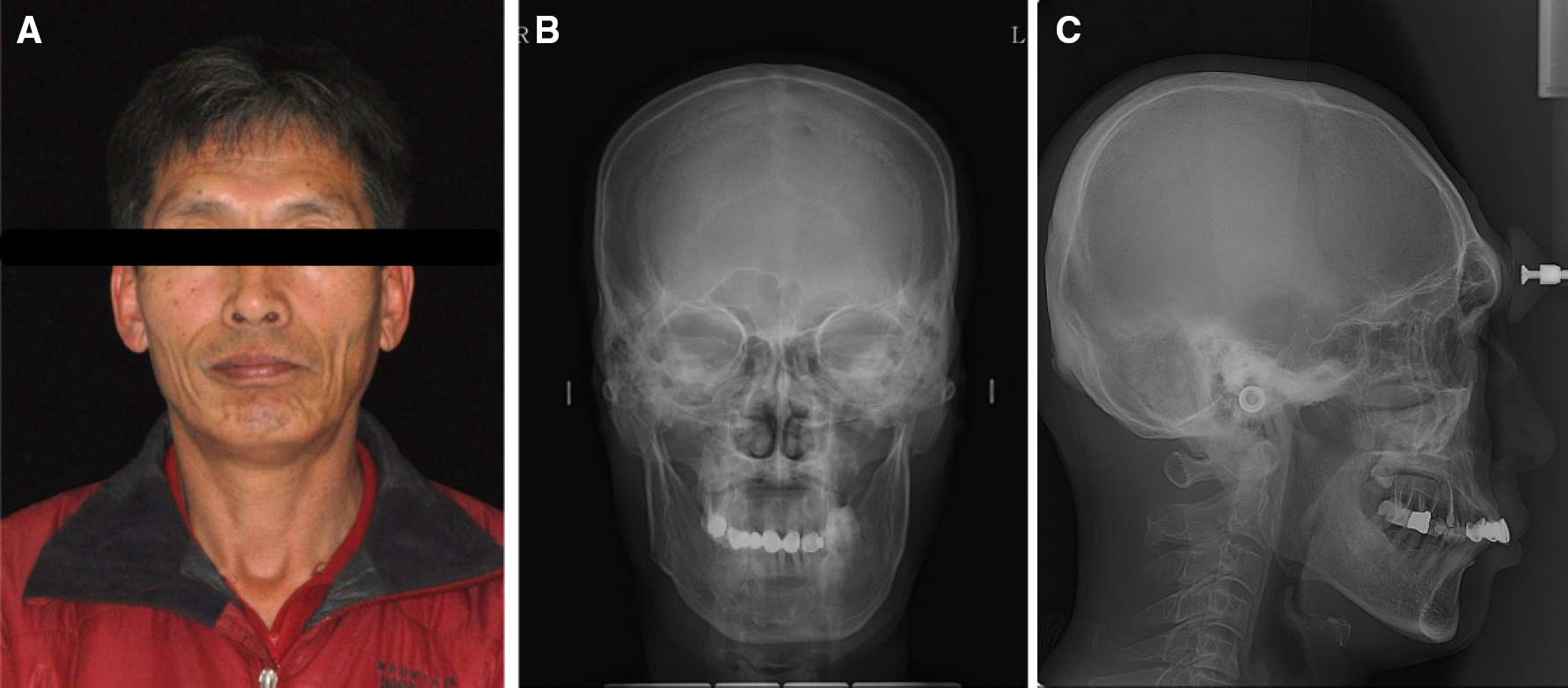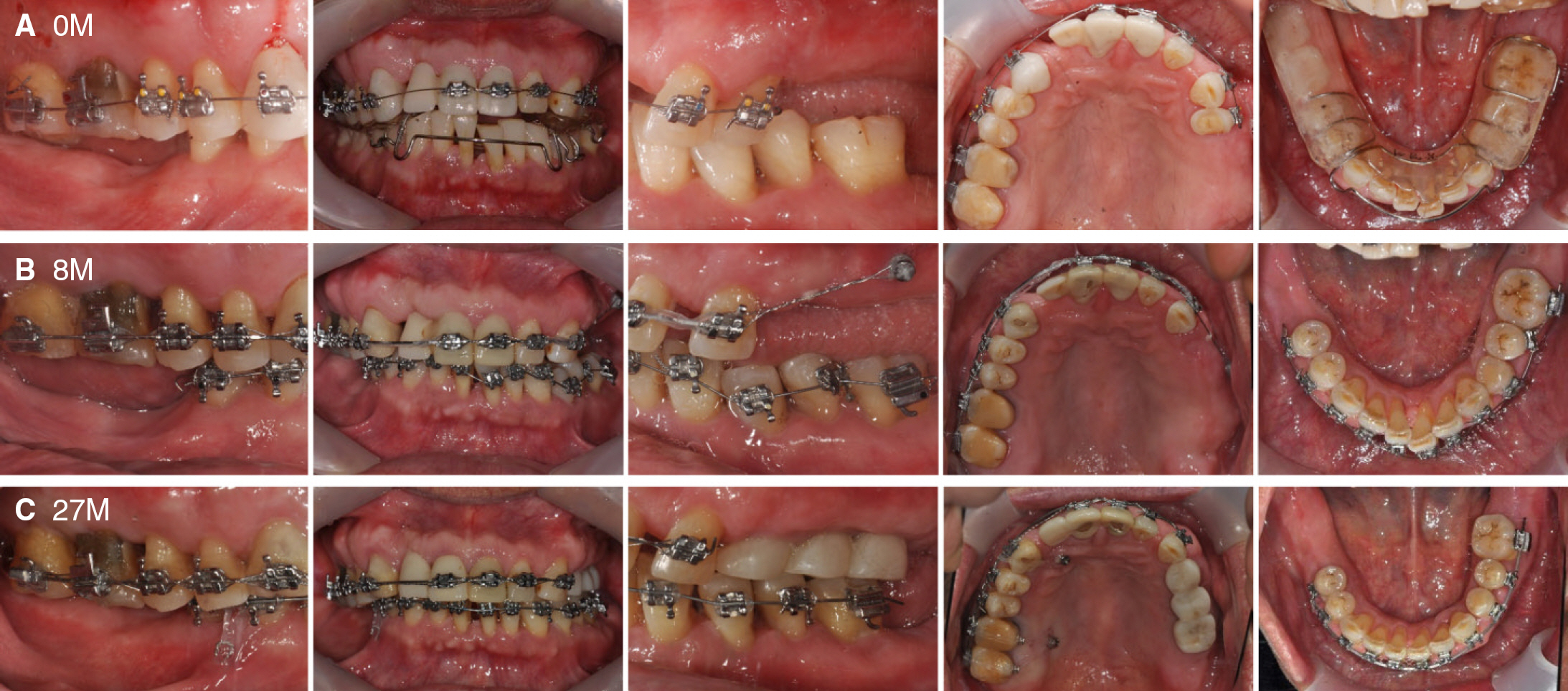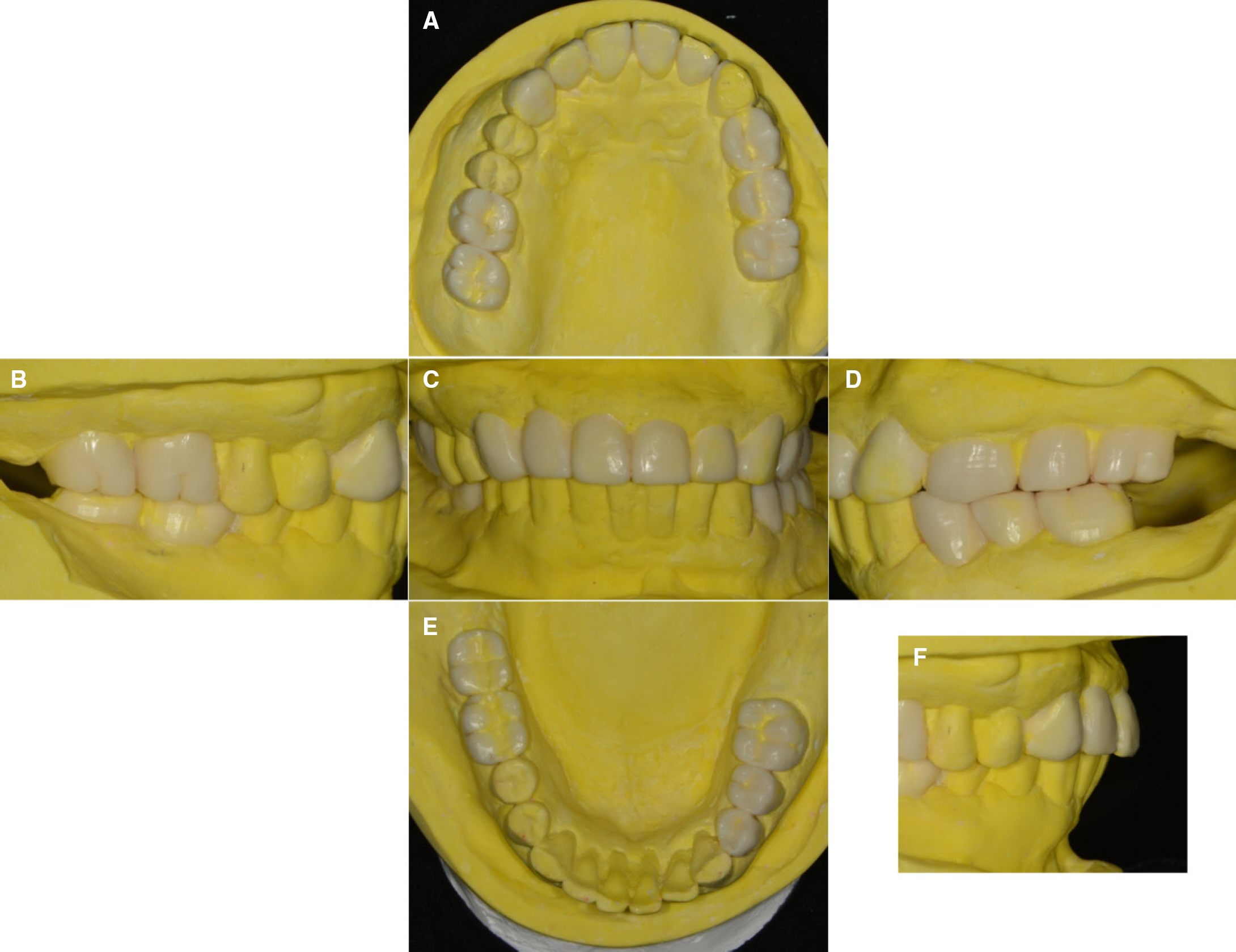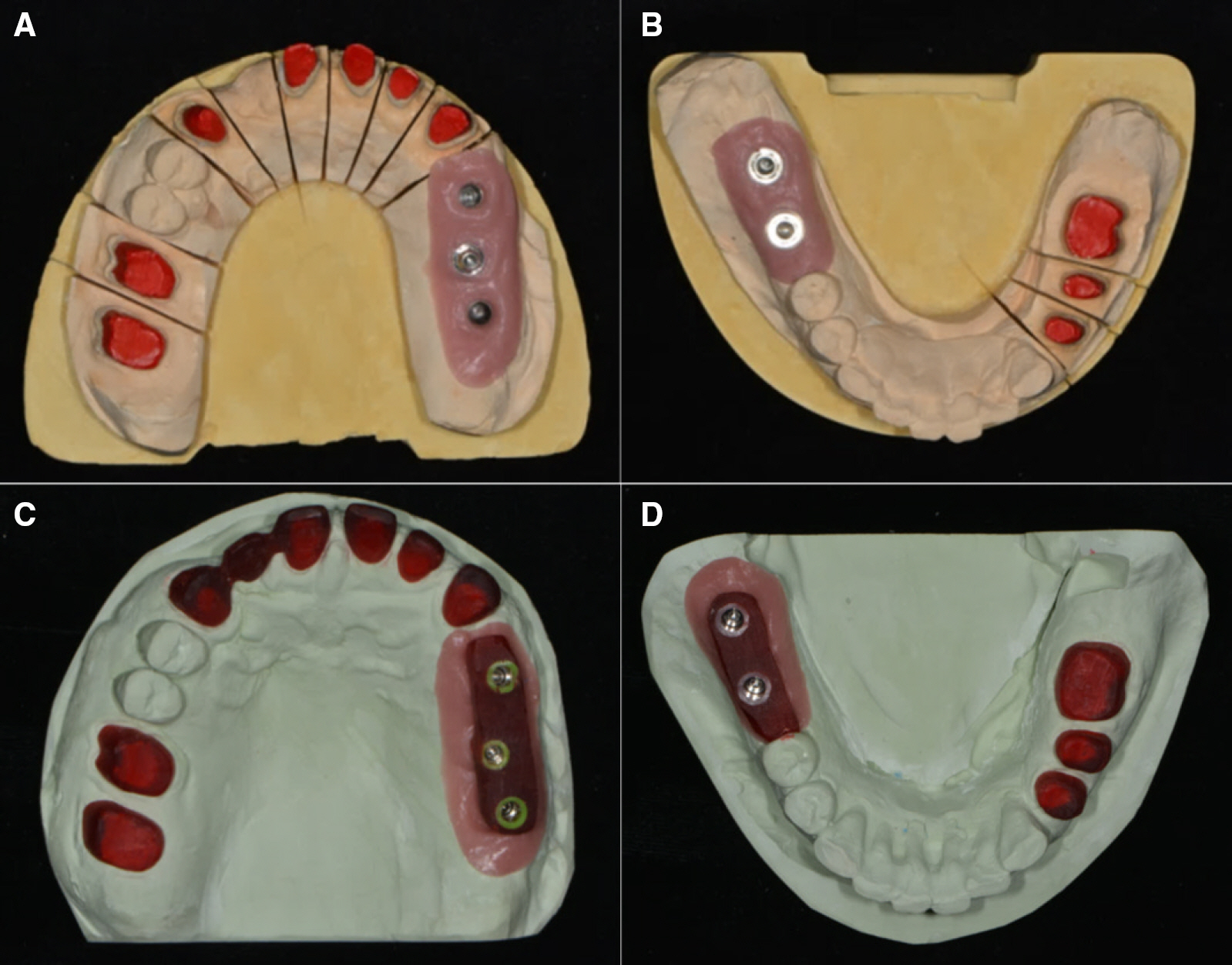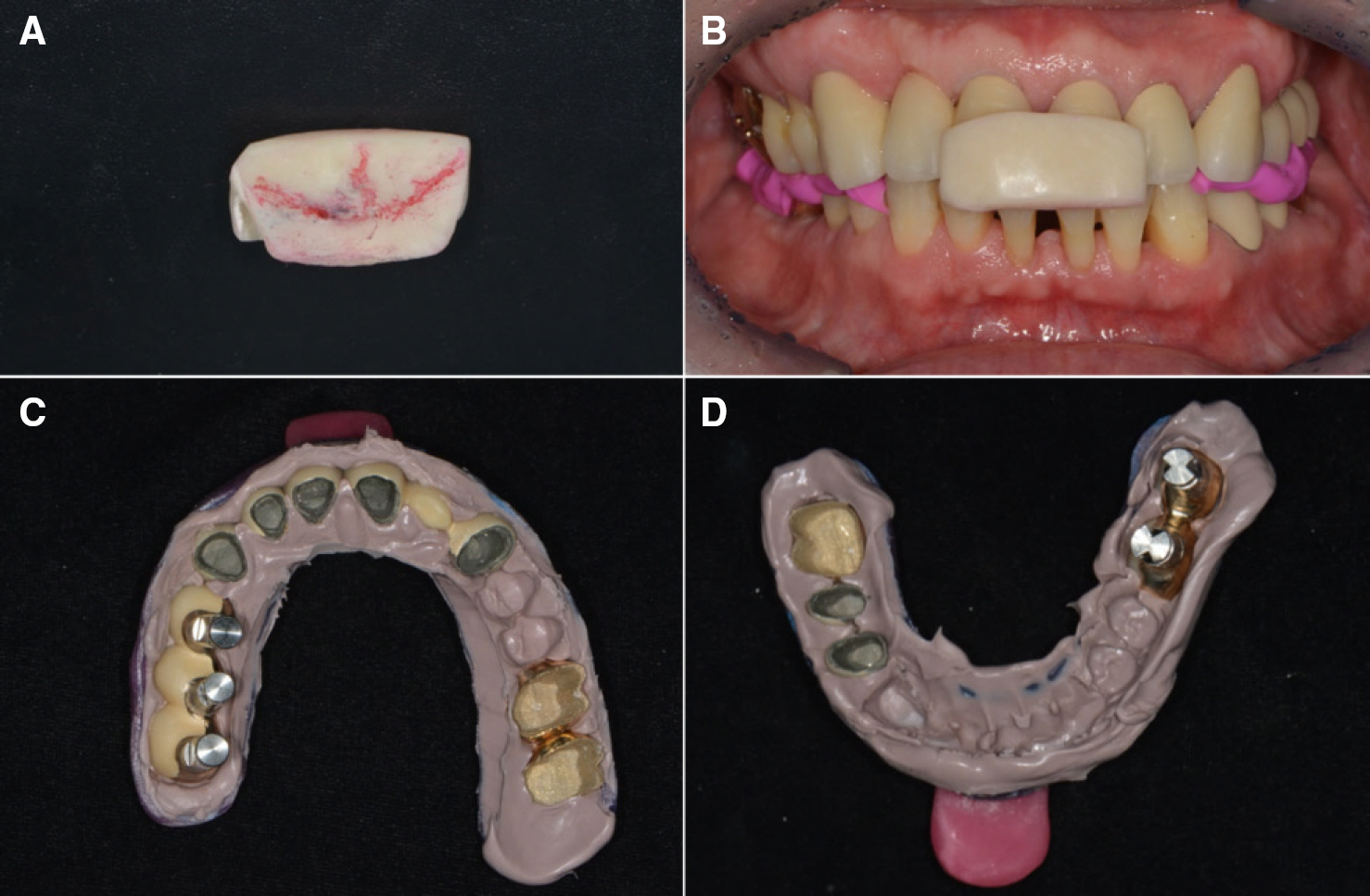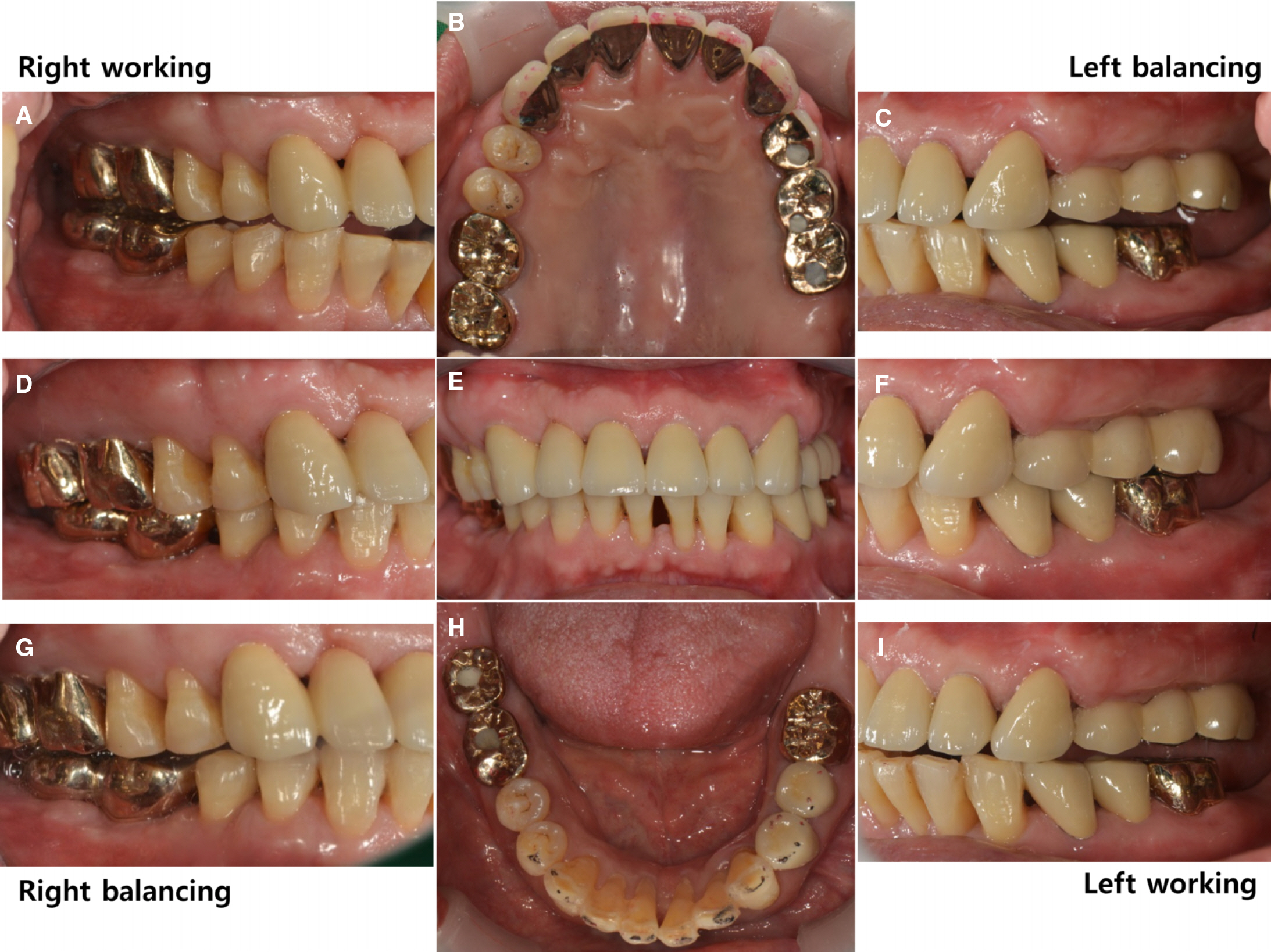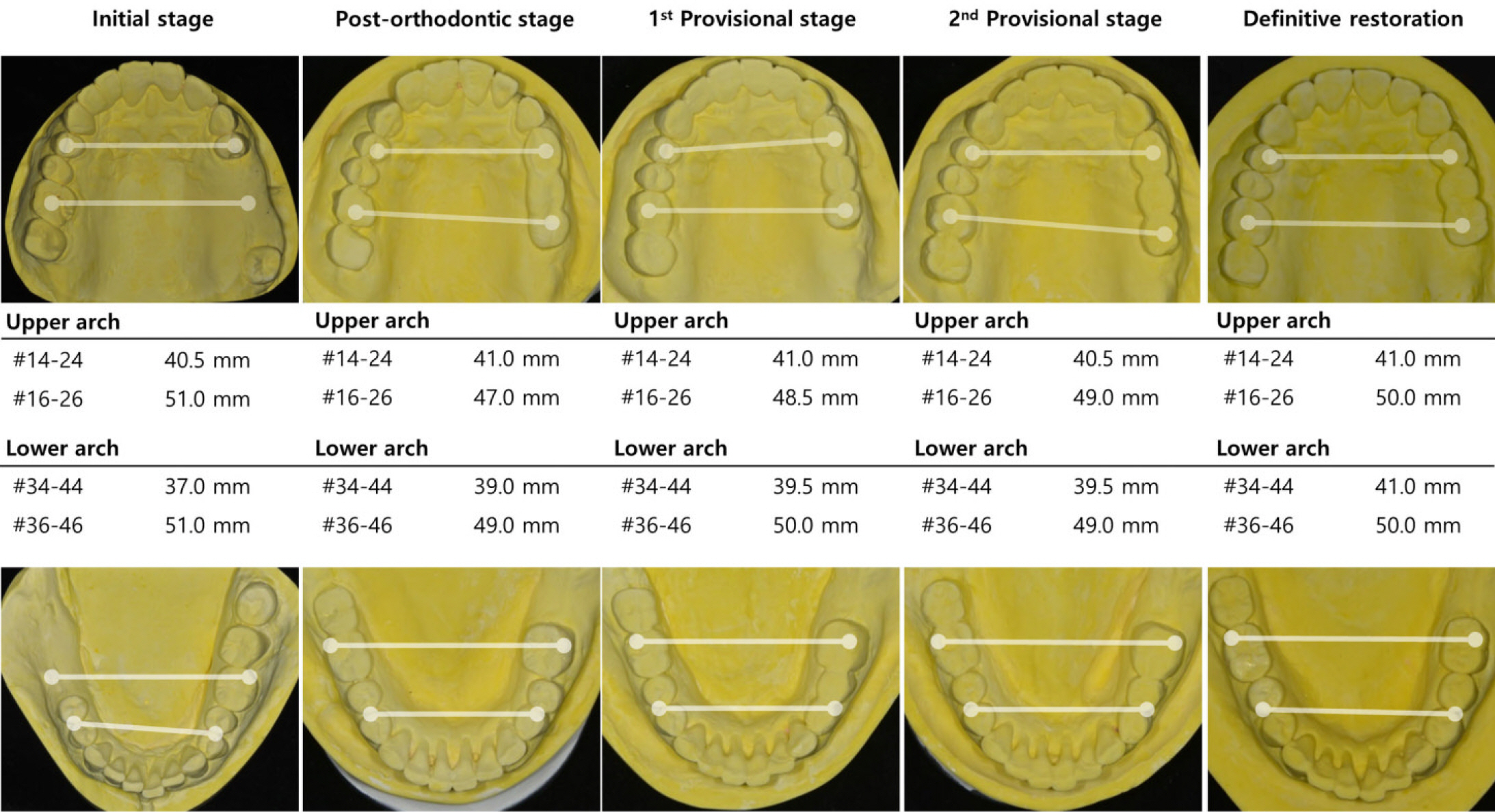J Korean Acad Prosthodont.
2015 Oct;53(4):377-391. 10.4047/jkap.2015.53.4.377.
Rehabilitation of unstable occlusion caused by inter-dental arch discrepancy
- Affiliations
-
- 1Department of Prosthodontics, College of Dentistry, Gangneung-Wonju National University, Gangneung, Republic of Korea. vino@gwnu.ac.kr
- 2Department of Orthodontics, College of Dentistry, Gangneung-Wonju National University, Gangneung, Republic of Korea.
- 3Research Institute of Oral Science, College of Dentistry, Gangneung-Wonju National University, Gangneung, Republic of Korea.
- KMID: 2118811
- DOI: http://doi.org/10.4047/jkap.2015.53.4.377
Abstract
- Inter-dental arch discrepancy between maxilla and mandible could cause three dimensional occlusal problems, and collapse of occlusal plane, multiple teeth loss and decrease of masticatory efficiency could be observed in patient having unstable occlusal contact. Patient showing posterior bite collapse, unstable occlusal contact and improper anterior guidance should be treated to recover stable centric occlusion, occlusal contact, and anterior guidance in conjunction between prosthodontics and orthodontic treatment. This clinical report describes the favorable results of orthodontic and prosthodontics rehabilitation of patient with above mentioned problems.
Figure
Reference
-
1. Moyers RE. Handbook of orthodontics. Year Book Medical Publishers Inc. Chicago, London, Boca Raton;. 1988. 392–96.2. Tamamura N, Kuroda S, Sugawara Y, Takano-Yamamoto T, Yamashiro T. Use of palatal miniscrew anchorage and lingual mul-ti-bracket appliances to enhance efficiency of molar scissors-bite correction. Angle Orthod. 2009; 79:577–84.
Article3. Chugh VK, Sharma VP, Tandon P, Singh GP. Brodie bite with an extracted mandibular first molar in a young adult: a case report. Am J Orthod Dentofacial Orthop. 2010; 137:694–700.
Article4. Yun SW, Lim WH, Chong DR, Chun YS. Scissors-bite correction on second molar with a dragon helix appliance. Am J Orthod Dentofacial Orthop. 2007; 132:842–7.
Article5. Tomonari H, Kubota T, Yagi T, Kuninori T, Kitashima F, Uehara S, Miyawaki S. Posterior scissors-bite: masticatory jaw movement and muscle activity. J Oral Rehabil. 2014; 41:257–65.
Article6. Shifman A, Laufer BZ, Chweidan H. Posterior bite collapse-re-visited. J Oral Rehabil. 1998; 25:376–85.7. Amsterdam M. Periodontal prosthesis. Twenty-five years in retrospect. Alpha Omegan. 1974; 67:8–52.8. Ramfjord SP, Ash MM. Occlusion. WB Saunders Co;Philadelphia: 1966. p. 115.9. The glossary of prosthodontic terms. J Prosthet Dent. 2005; 94:10–92.10. Dawson PE. Functional occlusion: From TMJ to smile design. Mosby;. Elsevier Health Sciences;2006. p. 453–77.11. Ishihara Y, Kuroda S, Sugawara Y, Kurosaka H, Takano-Yamamoto T, Yamashiro T. Long-term stability of implant-an-chored orthodontics in an adult patient with a Class II Division 2 malocclusion and a unilateral molar scissors-bite. Am J Orthod Dentofacial Orthop. 2014; 145:S100–13.
Article12. Weiland FJ, Bantleon HP, Droschl H. Evaluation of continuous arch and segmented arch leveling techniques in adult patients-a clinical study. Am J Orthod Dentofacial Orthop. 1996; 110:647–52.
Article13. Nanda R. Correction of deep overbite in adults. Dent Clin North Am. 1997; 41:67–87.14. Wennströ m JL, Stokland BL, Nyman S, Thilander B. Periodontal tissue response to orthodontic movement of teeth with in-frabony pockets. Am J Orthod Dentofacial Orthop. 1993; 103:313–9.15. McFadden WM, Engstrom C, Engstrom H, Anholm JM. A study of the relationship between incisor intrusion and root shortening. Am J Orthod Dentofacial Orthop. 1989; 96:390–6.
Article16. Pancherz H, Anehus-Pancherz M. Muscle activity in class II, division 1 malocclusions treated by bite jumping with the Herbst appliance. An electromyographic study. Am J Orthod. 1980; 78:321–9.17. Kwak YY, Jang I, Choi DS, Cha BK. Functional evaluation of orthopedic and orthodontic treatment in a patient with unilateral posterior crossbite and facial asymmetry. Korean J Orthod. 2014; 44:143–53.
Article18. Kawakami S, Kumazaki Y, Manda Y, Oki K, Minagi S. Specific diurnal EMG activity pattern observed in occlusal collapse patients: relationship between diurnal bruxism and tooth loss pro-gression. PLoS One. 2014; 9:e101882.
Article
- Full Text Links
- Actions
-
Cited
- CITED
-
- Close
- Share
- Similar articles
-
- Full mouth rehabilitation in patient with deep bite, inter-dental arch discrepancy and loss of vertical dimension: a case report
- An evaluation of the adequacy of PONT's index
- A study on the dental arch by occlusogram in normal occlusion
- Prosthetic rehabilitation for a patient with CO-MI discrepancy
- Relationship between inter-condylar width and inter-maxillary first molar width

